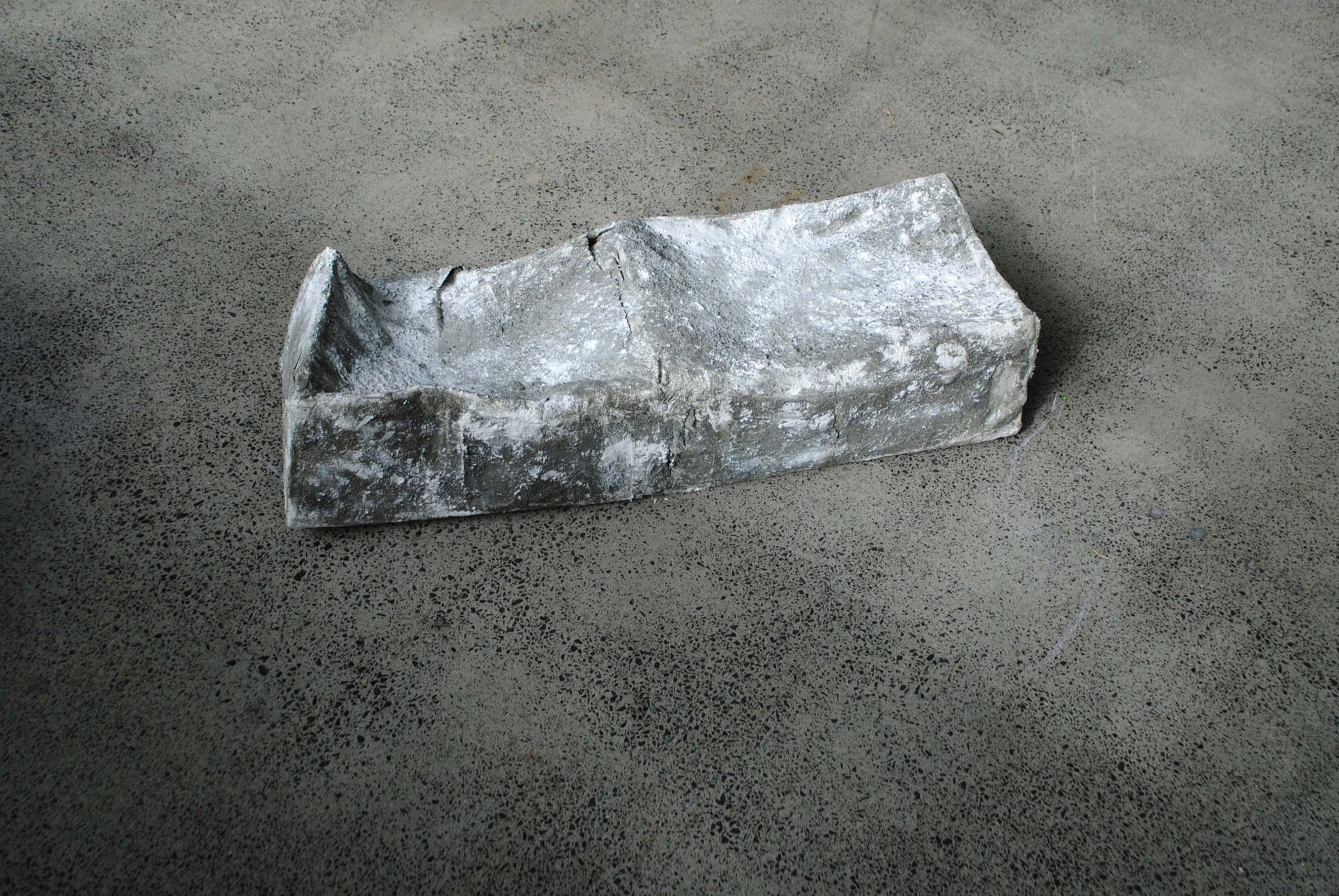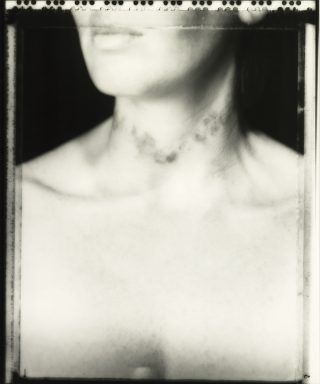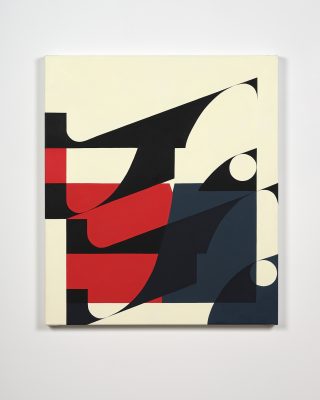Regular yet deformed, fragile yet robust, simple yet elaborate, uniform yet multiple, humble yet highfalutin—Monique Lacey’s squashed boxes are deeply dependent on counteraction. The artist not only reconciles opposing qualities, but also uses these to temper her experiments, preventing them from lapsing into extremes of asceticism or indulgence. The very form of the works derives from a process of mitigation. Earlier pieces made use of materials associated with packing and transportation, such as cable ties and wool sacks, turning them into sculpture. But Lacey, eager to reactivate an old interest in painting, soon put the brakes on this line of investigation.
Retaining a connection with commercial packaging and the utilitarian, she began to work with store-bought cardboard boxes, bound in grid formation with duct tape. To these, she added plaster strips of the kind used to create casts for broken limbs, a material that also gestured in the direction of the traditional plaster maquette. The overall form remained sculptural, the box being an archetypal human-made volume, a perfect abstraction of the three-dimensional space we inhabit. At the same time, Lacey set out to diffuse the focus on the spatial. The structure was treated as a support for paint, the hollow carapace becoming a site for surface play. Fixed to the wall, it was essentially an engorged canvas.
These works also saw the artist begin to draw on motifs related to her cultural background, to her childhood in the Netherlands. The boxes naturally suggested the compact modernist dwellings that populate Dutch cities, while the grids formed by their agglomeration recalled the rectilinear networks found in works of De Stijl art and design, perhaps most notably in the paintings of Piet Mondrian. Painted white, the works echoed monochromes by the likes of Kazimir Malevich and Robert Ryman. As with so many minimalist works, they used the single colour to direct attention to the materials, subtleties of texture, effects of light and shadow on the skin of the work.
And yet Lacey was concerned that her neat boxes were in danger of becoming stuffily aesthetic. She thus determined to disfigure them, removing them from the wall and squashing them. Deflation breathed new life into the pieces. Their strong right angles were interrupted, both by large diagonal creases and by smaller organic fissures in the plaster and paint. This enhanced the material richness of the works and added a note of drama, through the creation of more complex faces across which light would dance, and through the introduction of a performative mark. This mark, of course, was not made using the brush, but by altering the support, further blurring the distinction between painting and sculpture.

Monique Lacey, All that glitters ain’t gold, 2018.
The interaction between the austerity of the original boxes and the relative excessiveness of the crushed versions suggested the possibility of playing productively with the tension between the minimal and the baroque. The artist has since experimented with different colours: sober greys and blacks, as well as more flamboyant metallic paints. She has used varnish, applied to the boxes after squashing. This glossy substance serves to counteract the roughness of the cardboard and plaster, while also reintroducing much-needed structural integrity. It prevents the works from becoming wholly physically impoverished, while still allowing the ordinariness and vulnerability of their ingredients to show through.
Lacey’s most recent boxes incorporate further elements. Through the fault lines in the broadly monotone upper layers of some works may be spied threads of electric blue or fluorescent pink. Other works have been coated in silicone and dusted with pigment, creating surfaces similar to those of Anish Kapoor’s powdered sculptures. Unlike the varnish, this treatment reinforces the chalkiness of the cardboard support, making it appear still more tenuous, even as it adds strength. Furthermore, it offsets the visual effects of the squashing, toying with one’s perception of depth, and making the precise nature of the underlying forms less legible.
Encountering Lacey’s works is a bodily experience, not only because they are so materially rich, but also because they immediately communicate the controlled crushing fundamental to their production. Potential art historical references (to Andy Warhol’s Brillo Boxes, for instance) and conceptual associations (with issues such as consumption, transience, things stored and forgotten) are quite subordinate to this squashing, an act that encapsulates Lacey’s wider project of reigning in her practice just prior to total collapse. It is a risky business, but it is also deeply pleasurable—for the artist, no doubt, in the making, but also for us as we stand in front of the boxes and imagine ourselves engaging in similar games of cheeky disruption.
—Tāmaki Makaurau, November 2017
*
Essay commissioned by Monique Lacey. An abbreviated version appears in the catalogue for Cul-de-sac, ed. Chloe Geoghegan (Tāmaki Makaurau Auckland: RM, 2018).




